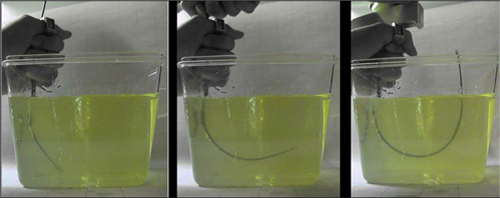A Single-entry Tunneler (SET) for hemodialysis graft procedures was developed by my team during the Precise Machine Design class 2.75. Sub-cutaneal tunnels are made in a patient's forearm to accomodate blood vessel grafts to allow access for dialysis procedures. Current tunneling technology consists of metal tubes with conical, "bullet-shaped," tips. These tunnelers are simply pushed through the connective tissue under the skin. The grafted vessel is tehn pulled through the metal tube and the tube is removed leaving the vessel in place.
In the forearm procedure, two incisions are necessary since the radius of curvature is too tight to make the turn using current trachnology. The SET solves this problem by making use of the elastic properties of nitinol. Using nested nitinol tubes pre-bent to different curvatures, the SET is able to complete the necessary paths with only one incision, meaning a quicker procedure, less trauma and a lower chance of infection.
I was in charge of the design of a feedback system for the doctor. We developed a fiber-optic light within the tunneler which allowed the doctor to locate the position and depth of the SET's tip. The intensity and diameter of the circle of light on the skin indicated depth and the tip's x-y position.


